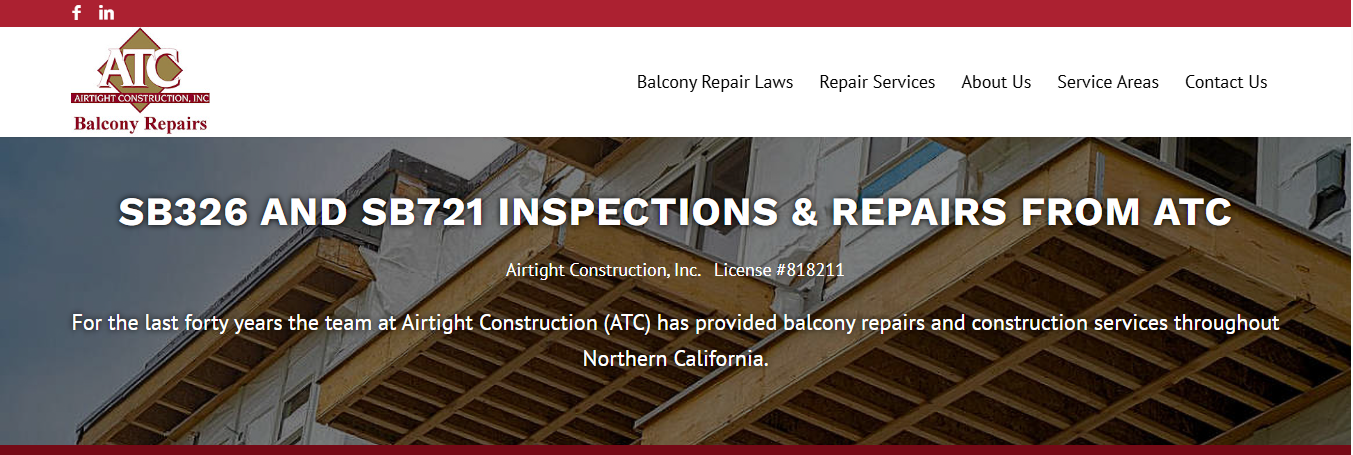SB721 Inspection: What California Property Owners Need to Knowv

If you own or manage a multi-family residential property in California, SB721 inspections are now a critical part of your building’s maintenance and legal compliance. Known as the “Balcony Inspection Law,” Senate Bill 721 was enacted to improve the safety of elevated structures like balconies, decks, stairways, and walkways in apartment buildings.
What Is SB721?
SB721 is a California state law passed in 2018 that mandates the regular inspection of Exterior Elevated Elements (EEEs) in buildings with three or more residential units. These inspections are required to identify structural weaknesses, water damage, dry rot, or other issues that could compromise safety.
The law was passed following several high-profile structural failures, including the tragic balcony collapse in Berkeley in 2015, which killed six people and injured seven others. SB721 is designed to ensure that such disasters never happen again due to neglect or hidden structural damage.
What Structures Require Inspection?
SB721 targets exterior elevated elements that meet all of the following criteria:
-
Are made of wood or wood-based products
-
Are six feet or more above ground level
-
Are subject to weather and moisture exposure
-
Are designed for human occupancy or use
This includes balconies, decks, exterior stairways, catwalks, landings, and elevated walkways.
Who Is Required to Comply?
The law applies to multi-family residential buildings with three or more units, such as:
-
Apartment complexes
-
Duplexes, triplexes, and larger properties
-
Residential buildings with external wood-framed elements
Condominiums governed by HOAs fall under a separate law—SB326.
When Must Inspections Be Completed?
The first SB721 inspections must be completed by January 1, 2025, and then every six years thereafter. If repairs are needed, they must be completed within 180 days of receiving the inspection report. If unsafe conditions are discovered, they must be corrected immediately.
What Happens During an SB721 Inspection?
A qualified professional—typically a licensed structural engineer, architect, or general contractor—will:
-
Perform a visual inspection of all applicable exterior structures
-
Check for rot, decay, water intrusion, and structural instability
-
Probe materials if necessary to check hidden conditions
-
Provide a detailed inspection report with repair recommendations
The inspection findings must be documented and submitted to both the property owner and, if repairs are required, to local building departments.
Why Early Compliance Matters
With the 2025 deadline approaching, many inspection companies are already experiencing high demand. Proactively scheduling your SB721 inspection can help:
-
Avoid last-minute rush and higher costs
-
Ensure tenant safety and peace of mind
-
Prevent costly emergency repairs or city penalties
-
Preserve the long-term value of your property
Choose a Trusted SB721 Inspection Provider
If you’re unsure how to begin or need help navigating the requirements, it’s best to partner with an experienced inspection and repair team.
ATC Balcony Repairs specializes in SB721 inspections and multi-family housing repairs across California. Their certified professionals help property owners meet compliance deadlines, address repair needs, and keep residents safe.
- Art
- Causes
- Crafts
- Dance
- Drinks
- Film
- Fitness
- Food
- Games
- Gardening
- Health
- Home
- Literature
- Music
- Networking
- Other
- Party
- Religion
- Shopping
- Sports
- Theater
- Wellness


